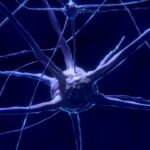 Autosomal dominant leukodystrophy (ADLD) is an ultra-rare, slowly progressive neurodegenerative disorder associated with the loss of white matter in the central nervous system (CNS). Several years after its first clinical description, ADLD was found to be caused by variants in the LMNB1 gene that cause its overexpression in at least the brain of patients. LMNB1 encodes for Lamin B1, a protein of the nuclear lamina. Lamin B1 regulates many cellular processes such as DNA replication, chromatin organization, and senescence. However, its functions are not fully characterized yet. Nevertheless, Lamin B1 together with the other lamins that constitute the nuclear lamina has firstly the key role of maintaining the nuclear structure. Being the nucleus a dynamic system subject to both biochemical and mechanical regulation, it is conceivable that changes to its structural homeostasis might translate into functional alterations. Under this light, this review aims at describing the pieces of evidence that to date have been obtained regarding the effects of LMNB1 overexpression on cellular morphology and functionality. Moreover, further investigation on ADLD morpho-functional consequences is essential to better understand this complex disease and, possibly, other neurological disorders affecting CNS myelination are suggested. Read the full article here.
Autosomal dominant leukodystrophy (ADLD) is an ultra-rare, slowly progressive neurodegenerative disorder associated with the loss of white matter in the central nervous system (CNS). Several years after its first clinical description, ADLD was found to be caused by variants in the LMNB1 gene that cause its overexpression in at least the brain of patients. LMNB1 encodes for Lamin B1, a protein of the nuclear lamina. Lamin B1 regulates many cellular processes such as DNA replication, chromatin organization, and senescence. However, its functions are not fully characterized yet. Nevertheless, Lamin B1 together with the other lamins that constitute the nuclear lamina has firstly the key role of maintaining the nuclear structure. Being the nucleus a dynamic system subject to both biochemical and mechanical regulation, it is conceivable that changes to its structural homeostasis might translate into functional alterations. Under this light, this review aims at describing the pieces of evidence that to date have been obtained regarding the effects of LMNB1 overexpression on cellular morphology and functionality. Moreover, further investigation on ADLD morpho-functional consequences is essential to better understand this complex disease and, possibly, other neurological disorders affecting CNS myelination are suggested. Read the full article here.
204
